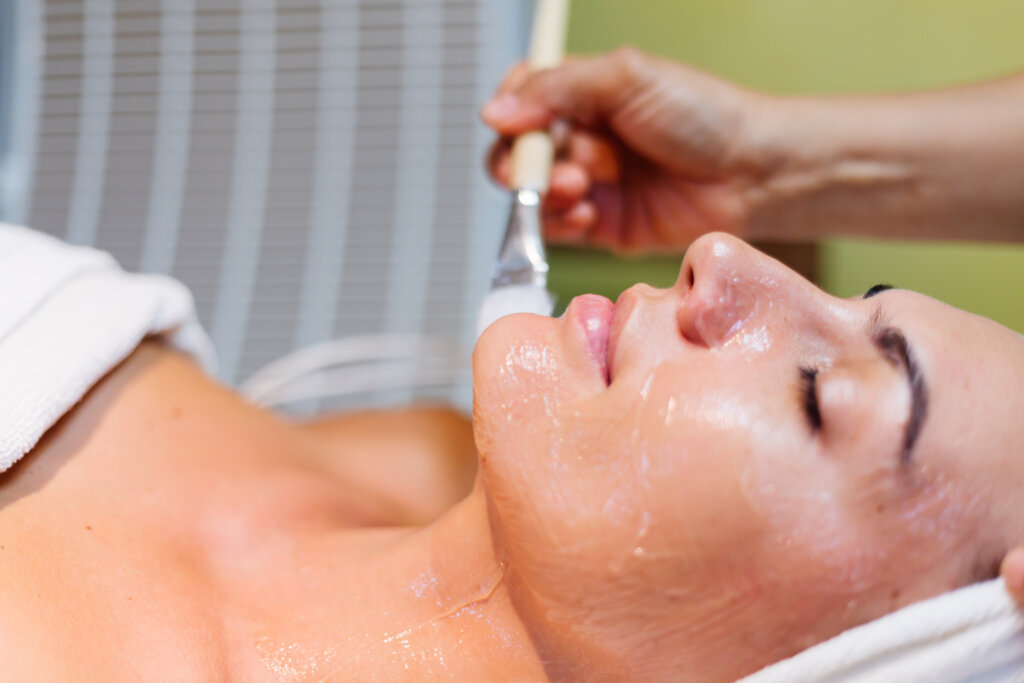Most of you pay attention to your faces and hair to keep them healthy and happy. People always forget the neck, which holds the body parts together. Have you ever wondered why your neck is getting darker while your face is not? Have you ever felt embarrassed about your black neck? It is critical to identify the cause of a dark neck. This blog will provide you with all the information you need to know about the dark neck, its causes and treatments.
What Is a Dark Neck or a Black Neck?
When your neck’s skin is noticeably darker than the surrounding skin, it is referred to as having a dark neck, also known as a black neck or acanthosis nigricans.
Symptoms of a Dark Neck?
The primary symptom is the darkening of the skin on your neck. In some cases, the darkening may also affect other parts of your body, such as the armpits, groin, soles, knuckles, palms, lips, and other areas. The symptoms include,
- Your skin will become thickened – hyperkeratosis.
- Velvety patches can be felt while touching your skin.
- Itchiness
- Dryness
- An unusual odour
- Excessive roughness
- The gradual change in colour
- Redness, swelling or warmth
Some of the severe symptoms include
- Depression
- Fatigue
- Constipation
- High blood pressure
- Loss of appetite
- Missed periods
- Pain in the abdominal region
If the darkening appears suddenly, consult a doctor immediately as it can be a sign of a more serious underlying health condition.
What Are the Causes of the Dark Neck?
A black neck can occur in both healthy individuals and those with any medical condition. Some people assume that a dark neck is due to a lack of hygiene or repeated friction due to neck pieces, which is untrue.
Some of the causes of the dark neck are,
Overexposure to Sunlight
If you are exposed to sunlight for long hours daily, the ultraviolet rays will cause a tan on your neck. Melanin, which shields the skin from UV damage, is produced more readily as a result of UV light stimulation. The back of the neck becomes hyperpigmented.
Acanthosis Nigricans
The condition in which the skin turns dark and thick with a sense of velvety patch. Most commonly, it occurs in the armpits and sometimes in the groin area. Other parts that are included are the neck, skin folds, and other body parts. It can affect men, women, and even children. People with dark skin are more prone to this condition.
The condition is more associated with your body’s insulin level. It is more common in those with prediabetes and diabetes. Children with acanthosis nigricans are at a high risk of type 2 diabetes mellitus.
Various drugs like niacin, birth control pills, prednisone, and other corticosteroids can also cause this disease.
Other symptoms of this condition are
- Cushing’s syndrome
- Cancer
- Hormonal disorders
- Obesity
People with acanthosis nigricans may have a higher level of insulin than normal people. An unbalanced diet consisting of sugars, starches, and other foods may raise the level of insulin, thereby causing obesity.
Dermatitis Neglecta
The condition is also known as unwashed dermatosis. It is a rare skin condition that is caused by poor hygiene. Hence the formation of the scales on the skin, which are dark and waxy, resembling cornflakes. It can be easily treated by scrubbing the affected area with soap, water, or alcohol and by maintaining personal hygiene.
Drug-Induced Skin Pigmentation
Some of the drugs also contribute to skin hyperpigmentation, they are
- Phenytoin
- Non-steroidal anti-inflammatory drugs
- Amiodarone
- Antipsychotic drugs
- Tetracyclines
- Antimalarials
- Nicotinic acid
- Oral contraceptives
- Growth hormone therapy
Hyperpigmentation can appear anywhere on your body, including the neck. The colour ranges from dark brown to blue-black. This condition can be resolved once the drug that is responsible for the effect is stopped. In some cases, the discolouration can be long-term or permanent, which can only be removed with the help of laser treatments.
Tinea Versicolor
It is a skin condition caused by the fungus Malassezia furfur, a yeast that naturally occurs on your skin. An overgrowth of this fungus creates patches of discolouration on your arms, neck, and back that can be either hyperpigmented or hypopigmented.
The risk of this condition is increased by hot and humid weather, with a weak immune system, pregnancy and other medical conditions like diabetes
Other conditions like hypothyroidism, disorders of the pituitary gland, and Addison’s disease may also cause a darkened neck.
How Is Black Neck Diagnosed?
The black neck is not a serious disease, but you must consult your physician if you notice darkness around your neck. It can be a sign of alarm for any of the underlying health conditions like diabetes, thyroid disorders, obesity etc. Your doctor may ask you to conduct different medical tests to find out your health status.
How to Treat a Black Neck?
Eliminating and preventing dark necks can be done by treating the underlying health condition that is responsible for causing it. If the darkness is due to the administration of certain medications, it can be reversed by stopping the drugs. Sometimes it may last for a long time or permanently. You can consult your dermatologist to seek the correct advice on which method will work best for you. Some of the treatment methods include,
Topical Preparations
Retinoids
The first line of treatment for the black neck is the use of topical retinoids. The retinoids will effectively reduce pigmentation, acne, and wrinkles. They should be used with caution. Normally, people experience visible peeling, dryness, burning redness, and increased sensitivity to the sun. While applying the retinoids, you should start applying them only during the night till the skin gets adjusted to the retinoids, which may take about 4 to 6 weeks. Only low-strength counter retinoids should be applied at the starting stage, two to three times a week, and then gradually increase the strength and frequency. A higher strength of retinoids requires the prescription of a medical practitioner.
Antifungal agents
If the dark neck is caused by Tinea versicolor, antifungal agents like zinc pyrithione and ketoconazole are used topically.
Other topical products
Many over-the-counter topical products contain any of these ingredients that can lighten the skin and improve the skin texture.
The ingredients like Alpha Hydroxy Acids (AHAs), Beta Hydroxy Acids (BHAs), vitamin C, and vitamin E will help to reduce pigmentation and fine lines and remove excess dirt from sebum and dead skin cells.
Keeping the skin hydrated will help you to soften the skin and increase cell turnover by brightening the skin. Vitamin C will increase the sensitivity to the sun, so it should be applied only during the night.
A daily skincare routine starting with cleansing, then applying a toner followed by the application of a lotion or cream will help you to reduce the black neck.
Sunscreens
If the dark neck is caused by sun exposure, regular application of sunscreen with SPF 30 or higher can prevent it. Wearing a cap or hat while in sunlight and also avoiding the sun between 10 a.m. and 4 p.m. will also protect you from the damaging effects of sunlight.
Exfoliation
Exfoliating your skin with alpha hydroxy acids (AHAs) and beta hydroxy acids (BHAs) will reduce pigmentation, excess sebum, and dead skin cells and unclog pores, blackheads, and whiteheads. These agents will make your skin smoother, softer and brighter. The most common AHAs are glycolic acid and lactic acid. The most popular BHA is salicylic acid.
Oral medications
Oral retinoids are prescribed for severe acne conditions. Medications containing tretinoin, lactic acid, and glycolic acid are used to get rid of pigmentation. A combination of medicines along with treatment works best. You should always consult your physician for the best medical advice.
Oral itraconazole and fluconazole can be used to treat severe cases of the dark neck caused by Tinea versicolor.
Calcipotriol, which is a synthetic form of vitamin D, is effective in the treatment of Acanthosis nigricans by inhibiting the growth of keratinocytes, which receive melanin from melanocytes.
Chemical peels

Derma peeling, or chemexfoliation, is a beauty procedure that uses the active properties of chemicals to improve your skin. When the chemicals are applied to your skin, it peels off the skin layers depending on the potency of the solution. It will take off the dead skin cells and reveal smoother, brighter skin without fine lines. There are different types of chemical peels based on the nature of your skin and the chemicals used in the formulation of the peel.
Your dermatologist will advise you on the use and selection of chemical peels depending on your skin type and nature. Always follow the pre and post-care measures of chemical peel treatment.
Microdermabrasion
It is a form of physical exfoliation that is safe for all skin tones and types. In this procedure of skin rejuvenation, the skin is exfoliated physically by peeling away the stratum corneum, or the outer layer of the skin. The body’s self-healing power will form a new epidermis, effectively removing the pigmentation. For the best results, you should repeat the procedure every two to four weeks or as suggested by your dermatologist.
Laser treatments
The laser treatment uses targeted beams of light to reduce hyperpigmentation. The rejuvenated cells will make the skin tighter and younger. You should seek expert advice from a dermatologist who will appropriately guide you.
Read More:
Amazing Health Benefits of Eating Cucumber at Night
Sebum Plugs; Are They a Matter of Concern? How to Get Rid of It?
Wheatish Skin Complexion: How to Take Care of Your Skin and the Colours That Matches Your Skin
Do You Know Why Sun Tan Occurs and How You Can Prevent It Effectively?
7 Best Keratin Treatment Products in India That Are Formaldehyde-Free
Read More:
7 Best Keratin Treatment Products in India That Are Formaldehyde-Free
Sebum Plugs; Are They a Matter of Concern? How to Get Rid of It?
ABC Juice; Benefits, Side Effects. Why Is It Called a Miracle Drink
Do You Know Why The Like For Hair Ties Are Increased Among Men?
Wheatish Skin Complexion: How to Take Care of Your Skin and the Colours That Matches Your Skin
Final Word
Dark necks can be caused by many factors, starting from overexposure to sunlight to the use of different medications, and can also be a warning sign for certain kinds of underlying health issues. Whenever you notice that there is a colour change in your neck, you should consult your physician and seek medical advice appropriately. Removal of dark necks can only be achieved by identifying the exact reason and treating it. You can post your comments in the comment box.

